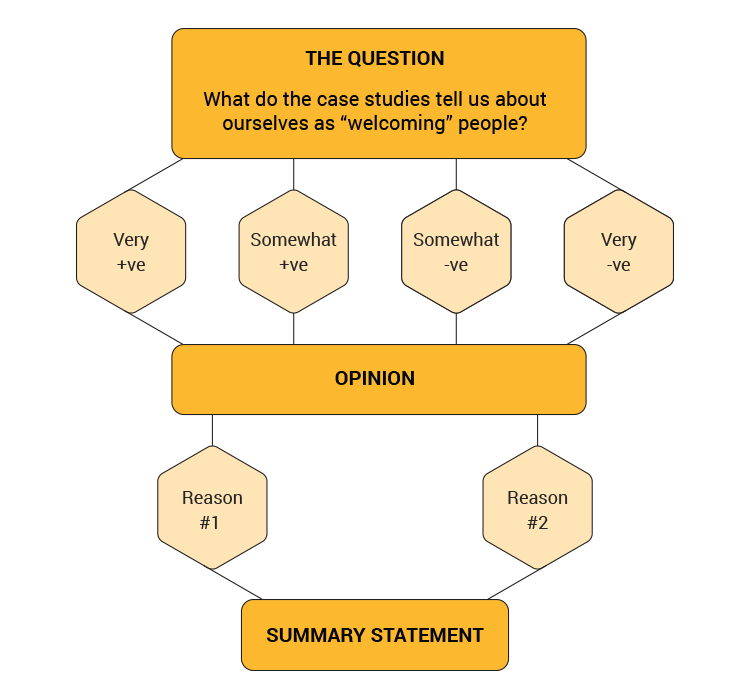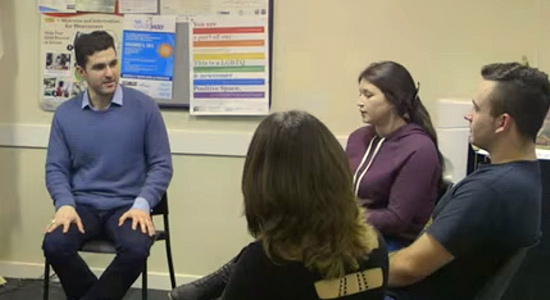Educator Tools

 Ask yourself:
Ask yourself:
- What do stories of how we welcome newcomers tell us about ourselves?
- Is Canada leading the way around the world in welcoming refugees into our country? Are we role models?
Immigration has been important throughout Canada’s history. Issues change and the ground shifts constantly when we look at Canadian society over time. Immigration and its implications for Canada will be important for the foreseeable future. Canadian immigration policy is affected by world events: from the coming of the Loyalists, to Syrian refugees, to those fleeing Putin’s invasion of Ukraine, to the aftermath of future crises yet to unfold.
 Did You Know?
Did You Know?
Canada is the only country to have won the Nansen Refugee Award, which is awarded annually by the United Nations High Commissioner for Refugees (UNHCR) to an individual, group, or organization in recognition of outstanding service to the cause of refugees, displaced or stateless peoples. Canadians are the first and only people to have been honoured collectively with this award. The 1986 award committee cited “the major and sustained contribution of the people of Canada to the cause of refugees.”
In this chapter, we examine Canada’s record and its treatment of new immigrants and refugees in need of safe haven, such as the passengers on the MS St. Louis, the Vietnamese boat people, Catholics in the 19th century, and Chinese immigrants. One example of the unfair treatment of newcomers is outlined in the chapter on the Chinese head tax. It looks at the injustices experienced by the Chinese who came to Canada to build our railways, only to be charged a tax to remain here. The discrimination lies in the fact that no other group of new immigrants was charged such a tax, and that the Chinese were already living in Canada when the tax was introduced. The chapter culminates in a look at current refugees and genocides occurring around the world and Canada’s responses.
 Key concepts › Classification
Key concepts › Classification
There are a number of ways to classify immigrants:
Permanent Resident
Most immigrants are in this category: planning to stay, gain citizenship, raise families and live permanently in Canada. Governments over our history have had criteria for “qualified” immigrants. These criteria have changed over time.
Temporary Workers
These immigrants are here on a contract basis and include a wide variety of people. Seasonal farm workers, students, professional athletes, and others who get work permits to fill specific jobs are in this category.
Refugees and Asylum Seekers
These can include people fleeing war, natural disasters, or human oppression based on religion, ethnicity, or identity markers. Some in this category may be considered “economic” refugees–those looking for better job opportunities.
Unauthorized Workers /Illegals
We do not know how many immigrants fit this category but they can include: people smuggled across the border, students or tourists overstaying visa dates, those with false documents, and others.
ACTION 1
Think
At times, Canada has welcomed or refused entry to immigrants. In small groups, discuss the following questions:
- What are “push” factors? Why did Canada push people away? Do you think they were right?
- What are “pull” factors? What has Canada done to bring newcomers to the country? Why did Canada choose to welcome new citizens? Is it right to do so?
- How “welcoming” was Canada to the newcomers once they arrived? Why do we react the way we do to those wishing to immigrate to Canada? Do Canadians have different reactions to different groups of immigrants?
Your teacher can print the Reaction Wheel for you to use to jot down your own opinions prior to discussing them. It is found in the Teaching Tools section on pages 6 and 7.
ACTION 2
Do
What is your position on immigration?
Write a position paper or editorial on Canada’s immigration record, using the graph below as an organizer of the data you collect from a multitude of sources and political positions. There is much to consider when researching about people becoming citizens of a new country. Read and watch as much as possible to determine how you feel about immigration in general, and in Canada specifically. With thorough research, you will be equipped to write this paper from a well-informed standpoint.
Some essay questions to help you form a strong opinion are:
- Did we deserve the Nansen Award? Looking at the past, or the present, how well are we welcoming and treating newcomers?
- Research current groups fleeing persecution (choose one specific group: i.e., Rohingya, Yazidis), and apply Hilberg’s three stages of antisemitism to your research.
Use the graphic organizer below to better understand your thoughts and reasoning in preparation for writing and participating in a class debate (Action 3) or go to Teaching Tools, on pages 10 and 11 of the Critical Thinking pages, to find instructions for the Clipping Thesis to gather and organize material data.

ACTION 3
Do
Class Debate
As a class, conduct a debate with reliable research through a variety of media outlets. You should be divided into two opposing sides:
Pro: Canada should open its doors to immigrants.
Con: Canada should close its doors to immigrants.
Or, you can decide on pro and con statements of your own to use for your debate.
After you and your group have conducted the research, written and rehearsed your debate, you can invite a neighbouring class, or a staff or administration person to be the judges. Ask guests to take notes to prepare for the last part of the debate with their own relevant questions.
Each debate will involve the following procedure:
- Each team will have 15-20 minutes to present its perspective. All team members should present a portion of this “affirmative argument.” The team should plan ahead and coordinate their presentations to present a logical case with facts from a variety of sources.
- If desired, teams may then take a 5-minute break to organize questions and counter arguments to challenge opponents. The audience should also be preparing questions, challenges, untapped arguments, etc. to raise during open discussion.
- Each team will have 5 minutes to present counter arguments.
- The remaining time will cover questions and discussion involving the invited guests.
Each student presenting in a debate can earn up to 30 points. Evaluation of your team will be based on:
- the clarity, collaboration, organization, and cohesiveness of the presentation
- the quantity and quality of supporting evidence clearly presented
- the quality of the arguments presented and challenges (to opponents) raised.
ACTION 4
Do
Studies on Canadians’ views about immigrants and refugees
Read this study on Canadians views about immigration and refugees
“There are some good things going on in Canada and there are some potential problems,” Donnelly said. “There’s room there for growth of serious intolerance if people aren’t careful.”
– Michael J. Donnelly is an assistant professor of political science and public policy at the University of Toronto.
Did you know?
Minister of Immigration Ahmed Hussen was Canada’s first Minister of Immigration, Refugees and Citizenship who was himself a refugee.
ACTION 5
Do
Looking at Numbers Then and Now
In November 2017, Immigration and Refugee Minister Ahmed Hussen provided these numbers of immigrants and refugees to be admitted in future years:
- 2018 – 310,000
- 2019 – 330,000
- 2020 – 340,000
What are the numbers provided today for this year and the next two or three years? Why are immigrants so important for a country like Canada? Can we maintain our economy and social programs without immigration?
Every effort has been made to gain permission from copyright holders to reproduce borrowed material. The publishers apologize for any errors and will be pleased to rectify them in subsequent reprints and website programming
Educator Tools


